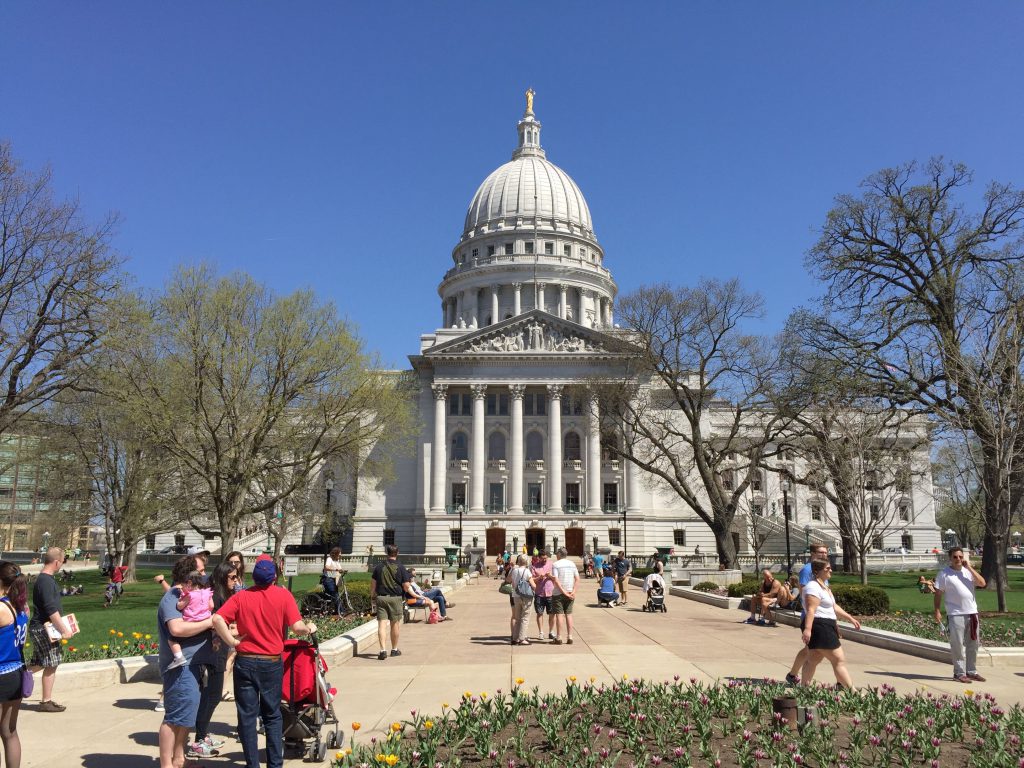The New Ways of Capitol Lawmaking
Passing constitutional amendments and seeking muscular high court rulings.
For most of Wisconsin’s 177-year history, lawmaking in the capitol modeled that chapter in your high school civics textbook.
The Legislature passed new laws, forwarding them to the governor. The governor, who heads the executive branch, signed most of them into law. The third branch of government, the judiciary, occasionally ruled on challenges to those laws, deciding whether they were constitutional.
Was there drama, disagreements and threats? Sure, but the traditional model of lawmaking held up.
Now, with the exception of passing the next two-year state budget, which both the Legislature and governor must agree on in a few months, and a few non-controversial bills that pass overwhelmingly and are signed into law, the old model is gone.
In its place is a new power formula for the most controversial changes leaders of both parties want made.
Republicans, who have controlled the Legislature since 2011, have had so many of their bills vetoed by Democratic Gov. Tony Evers that they have turned to getting constitutional amendments approved to achieve some of their priorities.
Democrats, for their part, have been unable to get Republican legislators to consider their ideas. So, buoyed by a liberal majority of the seven-member Supreme Court that resulted from elections in 2023 and this April, Democrats now ask the Court to order major changes they want made. Since 2023, the court has often agreed.
The Democrats’ latest win was a 4-3 Supreme Court ruling upholding an Evers veto that ordered a $325-per-pupil increase in annual school aid for the next 400 years. By striking numbers in the Republicans’ budget, Evers extended the annual bump in state aid from the 2024-2025 school year to 2425.
Writing for the three conservative dissenting justices, Brian Hagedorn lamented the new way laws are made.
“How does a bill become a law?” Hagedorn asked.
“According to the [court] majority, one option looks like this: The Legislature passes a bill … and sends it to the governor. The governor then takes the collection of letters, numbers, and punctuation marks he receives from the legislature, crosses out whatever he pleases, and—presto!—out comes a new law never considered or passed by the legislature … And there you have it—a governor who can propose and enact law all on his own.”
Evers called the ruling a “great news for Wisconsin’s kids and our public schools, who deserve sustainable, dependable, and spendable state support and investment.”
The top Republican, Assembly Speaker Robin Vos, accused the four-justice majority of being “a rubber stamp for liberal ally Tony Evers.”
But Republican legislators scored their latest victory on April 1 when voters overwhelmingly passed a GOP-recommended change adding a photo ID requirement to vote to the state Constitution.
Republicans said adding that requirement to the Constitution makes it much harder for future Supreme Court justices, or a Democratic governor and Democratic majorities in the Legislature, to repeal the photo ID mandate.
Republicans put four constitutional changes before voters last year, passing two of them.
In April 2024, voters approved two Republican-sponsored changes to the state’s charter: third-party groups can’t help pay to administer elections and only “election officials” – and not consultants who may work for partisan groups – can conduct elections.
But, in the August 2024 primary election, two other GOP constitutional changes lost. They would have prohibited governors from spending federal emergency aid without the Legislature’s approval and given lawmakers more control over the budget process.
Republicans plan to keep trying to enact their priorities by changing the Constitution, a process that does not involve the governors. A GOP plan to amend the Constitution to further limit the veto powers of governors is making its way through the Legislature, for example.
Republicans got voters to make four constitutional changes in 12 years. They included allowing Supreme Court justices to elect the chief justice, stopping the diversion of Transportation Fund monies for other programs and strengthening crime victims’ rights.
Democrats got their biggest victory when the Supreme Court’s liberal majority promised to draw new legislative district maps – a threat that forced Republicans to agree to new districts that saw more Democrats elected last November. That same majority also reversed an earlier decision that had banned curbside ballot drop boxes.
Now, Democrats eagerly await Supreme Court rulings on abortion rights and whether Act 10, which Republicans passed in 2011 to end collective bargaining by most public employees and make them pay more for pensions and health care, is illegal. That would also reverse another ruling by the conservative-led majority.
It may be time for a new chapter in that civics textbook.
Steven Walters started covering the Capitol in 1988. Contact him a stevenscotwalters@gmail.com
If you think stories like this are important, become a member of Urban Milwaukee and help support real, independent journalism. Plus you get some cool added benefits.
The State of Politics
-
A Wisconsin Political Trivia Quiz
 Dec 15th, 2025 by Steven Walters
Dec 15th, 2025 by Steven Walters
-
The Fight Over Wisconsin’s House Districts
 Dec 8th, 2025 by Steven Walters
Dec 8th, 2025 by Steven Walters
-
The Battle Over On-Line Betting
 Nov 24th, 2025 by Steven Walters
Nov 24th, 2025 by Steven Walters





















